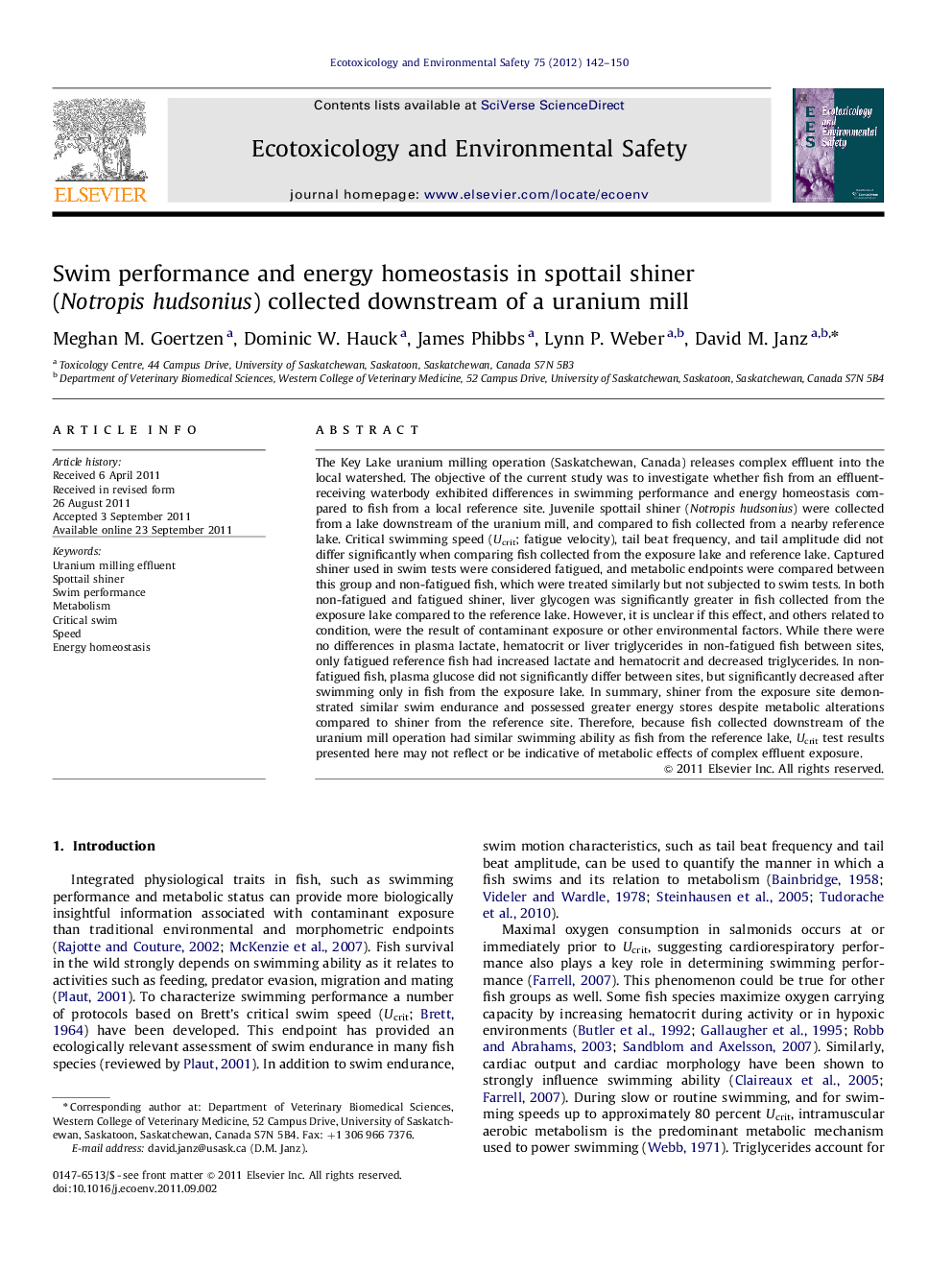| Article ID | Journal | Published Year | Pages | File Type |
|---|---|---|---|---|
| 4421058 | Ecotoxicology and Environmental Safety | 2012 | 9 Pages |
The Key Lake uranium milling operation (Saskatchewan, Canada) releases complex effluent into the local watershed. The objective of the current study was to investigate whether fish from an effluent-receiving waterbody exhibited differences in swimming performance and energy homeostasis compared to fish from a local reference site. Juvenile spottail shiner (Notropis hudsonius) were collected from a lake downstream of the uranium mill, and compared to fish collected from a nearby reference lake. Critical swimming speed (Ucrit; fatigue velocity), tail beat frequency, and tail amplitude did not differ significantly when comparing fish collected from the exposure lake and reference lake. Captured shiner used in swim tests were considered fatigued, and metabolic endpoints were compared between this group and non-fatigued fish, which were treated similarly but not subjected to swim tests. In both non-fatigued and fatigued shiner, liver glycogen was significantly greater in fish collected from the exposure lake compared to the reference lake. However, it is unclear if this effect, and others related to condition, were the result of contaminant exposure or other environmental factors. While there were no differences in plasma lactate, hematocrit or liver triglycerides in non-fatigued fish between sites, only fatigued reference fish had increased lactate and hematocrit and decreased triglycerides. In non-fatigued fish, plasma glucose did not significantly differ between sites, but significantly decreased after swimming only in fish from the exposure lake. In summary, shiner from the exposure site demonstrated similar swim endurance and possessed greater energy stores despite metabolic alterations compared to shiner from the reference site. Therefore, because fish collected downstream of the uranium mill operation had similar swimming ability as fish from the reference lake, Ucrit test results presented here may not reflect or be indicative of metabolic effects of complex effluent exposure.
► Swim performance and energetics were determined in fish exposed to mine wastewater. ► Exposed fish had greater energy stores and similar swim performance than reference fish. ► Differences in intermediary metabolism were evident between exposed and reference fish.
